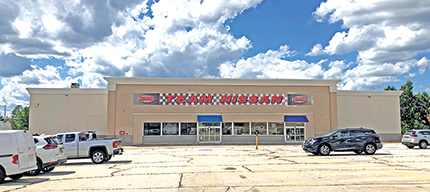



Manchester, NH Colliers International has leased 21,300 s/f at 2 Keller St. Doug Martin, of Colliers’ Manchester office, represented the landlord, Team Nissan. Chris Pascucci, of SVN The Masiello Group, represented the tenant, S.G. Torrice.
2 Keller St. is the former home to Toys “R” Us. Team Nissan purchased the property in 2018 to support the dealership’s continued growth, allowing for additional display space for new and used cars, as well as service and reconditioning bays. The property is undergoing a full redevelopment and S.G. Torrice’s tenancy helps complete the process by adaptively reusing the remaining portion of traditional retail box space with its conversion to a wholesale distribution warehouse.
S.G. Torrice, headquartered in Wilmington, Mass. is an award-winning independent wholesale distributor in the HVAC industry. S.G. Torrice represents American Standard, Trane, and Mitsubishi Electric. With additional locations in New Hampshire, Massachusetts, Maine, and Rhode Island, S.G. Torrice expanded into Manchester to better serve its customer base throughout the region.
“This additional space enables us to more quickly fulfill the needs of contractors throughout central New Hampshire,” said S.G. Torrice president, Stephen Torrice. “This location is our opportunity to forge new relationships with our heating and air conditioning partners, who are the true keys to our success.”


The multifamily market in Maine’s major cities presents a diverse range of opportunities for investors. We looked at the potential benefits and unique characteristics of three major submarkets in the state: Portland, Bangor, and Lewiston-Auburn. The information below is based on research done in CoStar and county registries, and focuses on multifamily properties that have four or more units.



As we all know, interest rates have been changing drastically, with movement in both directions, depending on the type and term of financing. The Federal Open Market Committee has taken drastic action in efforts to curb abnormally high inflation, but it hasn’t controlled labor cost growth to the extent that was intended.